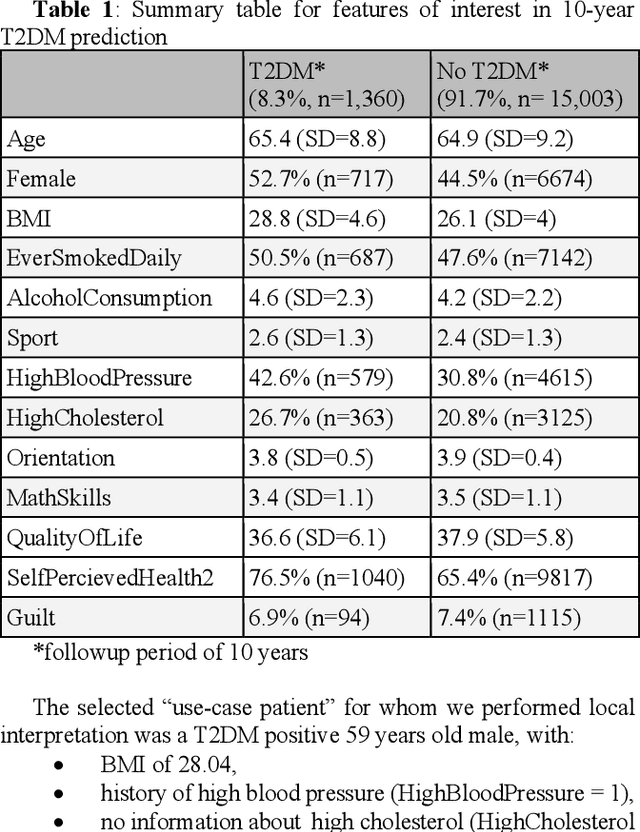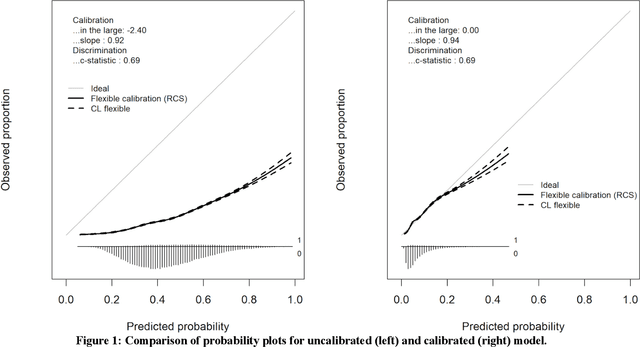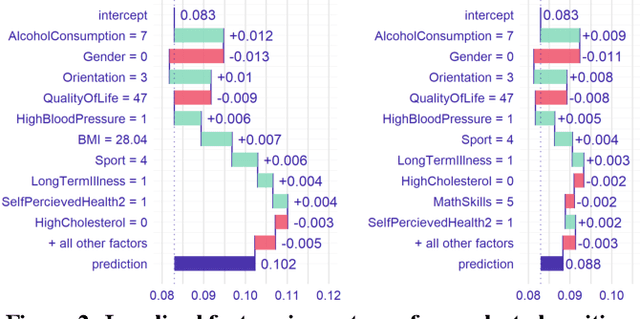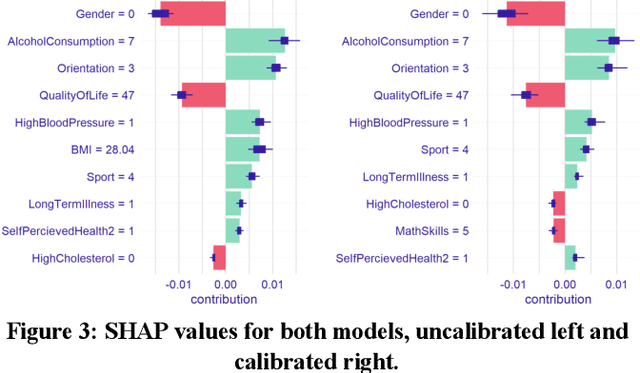Simon Kocbek
Local Interpretability of Calibrated Prediction Models: A Case of Type 2 Diabetes Mellitus Screening Test
Jun 02, 2020



Abstract:Machine Learning (ML) models are often complex and difficult to interpret due to their 'black-box' characteristics. Interpretability of a ML model is usually defined as the degree to which a human can understand the cause of decisions reached by a ML model. Interpretability is of extremely high importance in many fields of healthcare due to high levels of risk related to decisions based on ML models. Calibration of the ML model outputs is another issue often overlooked in the application of ML models in practice. This paper represents an early work in examination of prediction model calibration impact on the interpretability of the results. We present a use case of a patient in diabetes screening prediction scenario and visualize results using three different techniques to demonstrate the differences between calibrated and uncalibrated regularized regression model.
 Add to Chrome
Add to Chrome Add to Firefox
Add to Firefox Add to Edge
Add to Edge